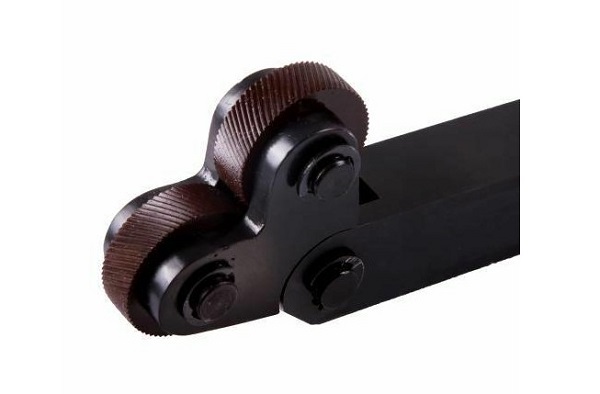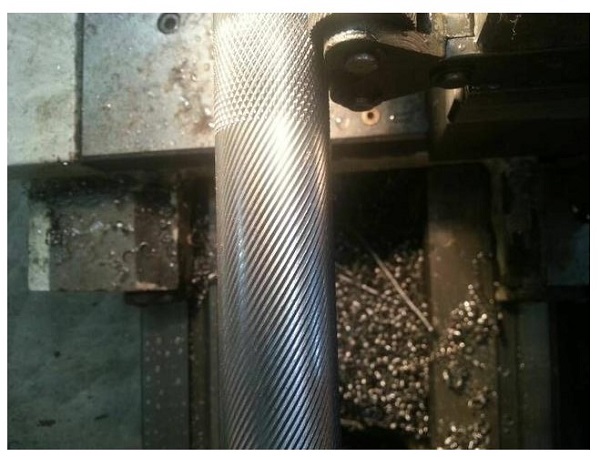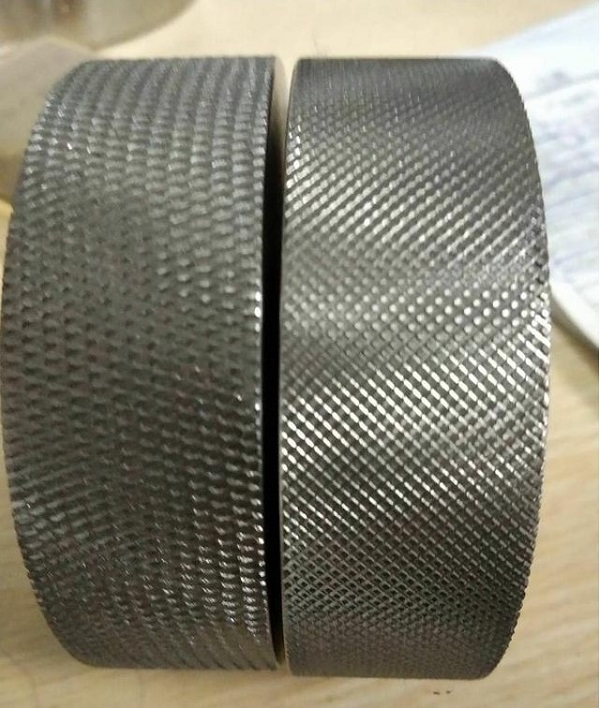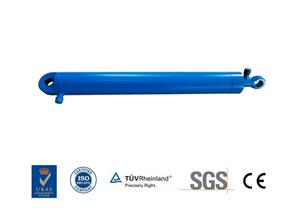Lathe knurling
In turning processing, knurling of parts is often encountered. The knurling seems simple, but often the pattern is disordered due to improper operation.
Kinds of knurling pattern:
There are many types of knurling patterns, which are roughly straight, twill, and reticulated. Among them, there are diamonds and squares, that is, 30 ° and 45 °. According to China's national standard GB6403.3-2008 "Knurling", the knurling pattern is calculated by the modulus, there are four kinds of 0.2, 0.3, 0.4, 0.5, the P value (the distance of the number of pattern teeth, unit mm) is 0.2 = 0.628, 0.3 = 0.942, 0.4 = 1.257, 0.5 = 0.571. There are usually metric and imperial patterns. The P value of the imperial system is calculated based on the number of teeth per inch. The metric P value is 0.1 per 0.1, that is, 0.3, 0.4, 0.5, 0.6, 0.7, 0.8, 1.0, 1.2, 1.4, 1.6 etc.
The specifications of the knurled wheel.
According to different diameters, widths and patterns, knurling wheels have many specifications. Domestically produced series have diameters of Φ15, Φ20, Φ25, Φ30, etc .; widths include 6, 8, 10, 12, 15, 20 and other series. The pattern has straight and twill, and the net is formed by the combination of two opposite twill knurling wheels. Imported knurling is now mostly German, with many specifications. There are specifications such as Φ10, Φ15, Φ20, Φ25 according to different diameters, and 4, 6, 8, 10, 15, 20 and other specifications according to different widths. According to different patterns, there are specifications such as straight, twill, and reticulate. According to the P value, there are many specifications from 0.3 to 1.6. In addition, there are special anilox wheels in foreign countries. As long as the part pattern is within the width of the wheel, it can be directly embossed with a single wheel. If the part anilox exceeds the width of the flower wheel, it is still necessary to use the upper and lower twill wheels for walking and pressing.
Type of knurling knife.
The knurling operation requires a knurling knife, that is, a shank equipped with a knurling wheel. Knurled knives can be purchased directly, or you can buy knurled wheels and make them yourself. Generally there are single wheel type, multiple wheel type and six wheel type. The single wheel type is to install a flower wheel on a knurling tool holder; the double wheel type is to install two flower wheels on a knurling tool handle, which are generally composed of two opposite twill wheels; the six wheel type is There are three sets of compound wheels mounted on the shank, which can directly convert different pattern combinations.
Single wheel knurling knife
Double Wheel Knurling Knife
Precautions for knurling operations
Knurling on a lathe, the force is quite large, and the workpiece must be clamped firmly. When installing a knurling knife, the blade surface should be perpendicular to the workpiece, and the center of the wheel should be aligned with the axis of the workpiece. At the beginning of knurling, it is very important to press directly into the workpiece without force, so that the workpiece can be pressed out of the pattern at once. Wait for the pattern to roll clearly before cutting. Otherwise, it is easy to produce broken heads, that is, the pattern is chaotic. When knurling, ensure that there is sufficient lubricating fluid, which can be lubricated with mechanical oil. It is also necessary to remove iron filings frequently to make the pattern clear.
The texture on the left is chaotic, and the right is normal
The same is true for knurling on automatic lathes. When designing the cam, it is required that after the knurling knife touches the surface of the workpiece, it is directly cut into the specified pattern bottom diameter, and then stays for about 10 ° ~ 15 ° to immediately retract the tool. If it is a flower, cut into the bottom diameter of the pattern and immediately let the knurling knife walk horizontally. After reaching a prescribed distance, also retreat the knife immediately, otherwise after a long stay, a knife mark will be produced, which will damage the surface shape of the pattern. . Press the anilox on the automatic lathe. As long as the width of the pattern does not exceed the width of the knurling wheel, you can directly use the anilox wheel. If the workpiece anilox exceeds the length of the knurling wheel, you need to use a compound wheel for flowering.
Turn on the lathe after everything is ready, do not start the knife at the beginning, wait for the rolled pattern to work, and then cut the knife, find the random pattern immediately stop, restart, if the depth is not enough, you can roll again.








